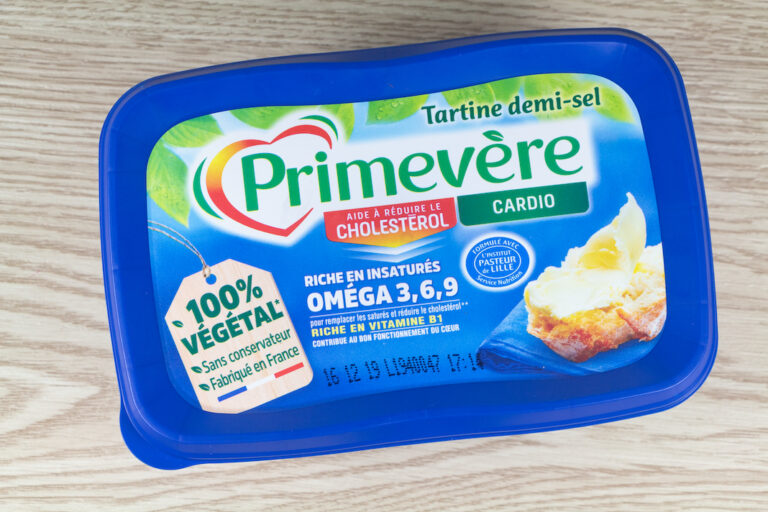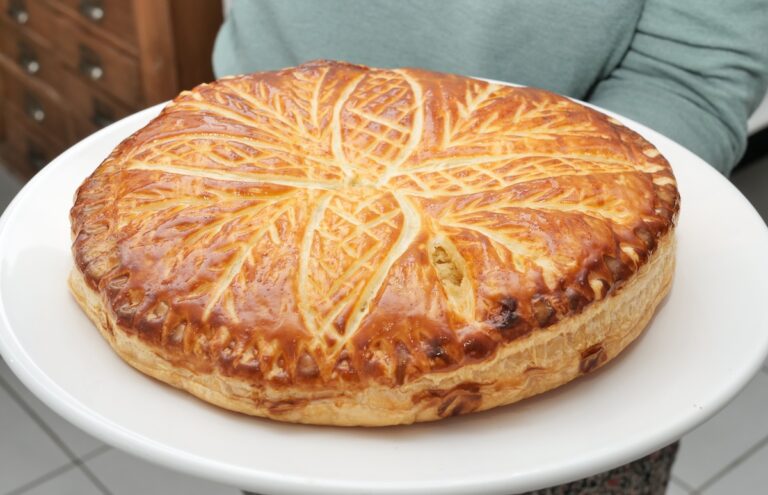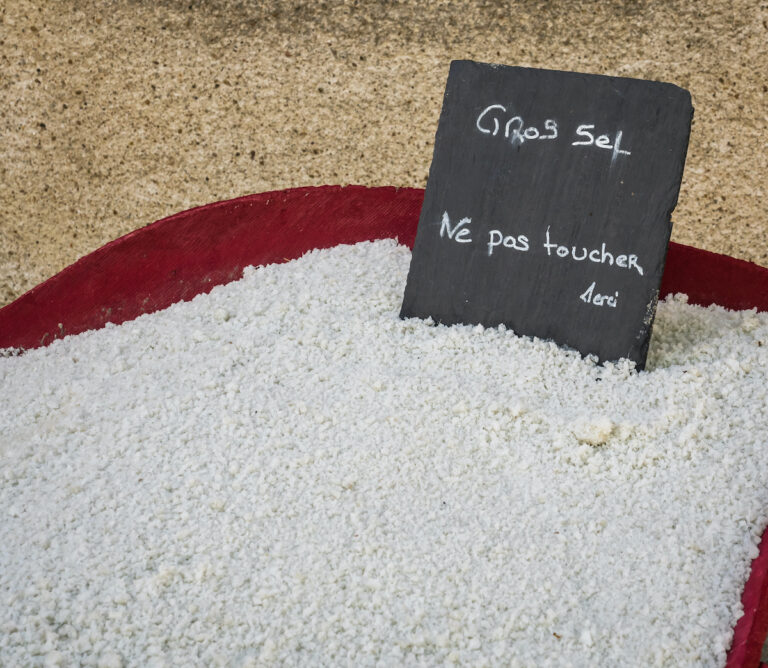
Dear Frenchly Readers,
Buckwheat, called blé noir or sarrasin in French, is not a wheat at all, despite its name. It’s also not a grain or a cereal or even a grass. It’s a flowering plant in the knotweed family, more closely related to rhubarb than wheat. It has nutty-smelling white flowers that bees love, and produces seeds, which we call “buckwheat.” Buckwheat came to the West originally (way back) via China. The seeds are tetrahedral and a mauve brownish or green color, depending on the variety and whether or not they are hulled. They can be toasted for granola without cooking, boiled with salt and egg for kasha, ground for flour, or added like croutons to salads, or as crispy bits in chocolate bars or cookies. My favorite cake maker, Dorie Greenspan, has this buckwheat “invisible cake,” so called because the thinly sliced apples held together by a buckwheat, egg, and milk mixture, melt to invisibility while the cake cooks, yet leave a very appley taste.
Buckwheat traveled from China (where it was cultivated as far back as 2600 BCE), to the Middle East, and finally to Europe in the 15th century (Though some sources put it as far back at the 13th!). Buckwheat doesn’t like to grow when it’s too hot or too wet; if it’s hot, it will flower and produce its seeds later in the season when it cools down. (It is usually planted in France in May.) Buckwheat needs pollinators to produce, and the honey from buckwheat plants is dark and rich and prized by beekeepers and mothers with sick children. Buckwheat chokes out weeds, and can be used instead of pesticides; also it needs no pesticides or fertilizers to thrive. Buckwheat is a terrific cover crop because it adds nutrients to the soil. Russia, China, and Ukraine produce the most buckwheat globally.
When I was traveling across the countryside of France with my family, in the summer of 2022, we saw buckwheat growing with surprising abundance. France is the 4th largest producer of buckwheat, much of it grown in Brittany, where the flour is traditionally used for galettes (darker colored savory crêpes) along with other breads and pastries. Because of the war in Ukraine, and a general French lack of enthusiasm for Russia, there has been increased pressure within France to increase production of their own buckwheat. Buckwheat serves an important purpose in France: It is used to make the prized Bretonne galettes, the aforementioned crêpes, which are naturally gluten free and made, most often, from finely milled buckwheat flour, water or milk, eggs, and salt. Some people call buckwheat France’s “black diamond.” And, if grown in Brittany (though it’s grown all over France), it gets a specific protected designation. Like many things in France, buckwheat’s special French food status trickles down or up, depending on how you look at it, to the farmers communities and bakers who use it.
Buckwheat has a long tradition in Maine, too. It’s grown in the St. John Valley up north, where it is rotated with potatoes, as it has been since the 1780s when the first French Canadian settlers arrived and grew it, often grinding it to make French Acadian pancakes, called “ployes.” We tend to grow the darker and more hardy variety of buckwheat up here, though there’s a green variety, too.
Buckwheat has some amazing qualities, giving it street cred as a “superfood”: It’s got anticancer and antioxidant activity, it lowers blood sugar and therefore might be a better “carb” for diabetics, and it’s high in protein. Among other things, it’s also anti-inflammatory, and high in lysine, which fights viruses. For people like me and my family, it’s a boon, since we don’t eat gluten. When we are traveling in France, we know that we can survive anywhere sarrasin crêpes are made, as they are often made on a separate griddle from the flour crêpes. (You need to ask.)
Speaking of traveling in France, the most beautiful buckwheat I ever saw was milled and sold in paper bags at the Chambelland bakery in Paris. I bought two and put them in my suitcase wrapped in t-shirts. When I opened those bags back home, they answered a question I had: French buckwheat is milled to such soft perfection, it’s like cake flour. Galettes or crêpes or breads made with that flour were light and fluffy–much more so than the denser, darker buckwheat I buy here, in Maine.
But even with what I can get here, I love it. I am so sick of rice flour, that buckwheat has opened new horizons. I am still learning how to use it, but I can tell you that I tend to mix it into my bread dough and my kids love a light, toasted buckwheat crepe cooked in butter, topped with an egg and cheese. If you burn buckwheat it can take on a very bitter taste, so be careful. The darker buckwheats (unlike those soft, almost white, flours from France) can add a grayish tinge to your breads; I tend to work with rather than against this, topping my bread with black sesame and poppy seeds.
À cuisiner, boire, regarder et lire ce weekend:
Ok, so I spent more of my last two weeks than I’d care to admit researching, cross researching, and fact checking places by arrondissement where you can safely eat gluten free in Paris. That labor of love is published today. There are some great finds in there, and, in fact, a lot of places I have tried, so I feel confident about the list. Others are new to me, and required a lot of making sure they would be safe for someone with Celiac– harder task than you might guess. Every single place I chose had to be good enough for someone who eats gluten to love, too.
But here’s what I became even more confident about as I wrote: That Paris is (indeed all of France is) a very easy city to be GF in; so easy because so many ingredients are fresh and whole and there is such incredible consciousness and attention to food. No matter where you are, rest assured that with the right questions and following a few rules, namely to focus on meats, dairy, eggs, vegetables and fruits, you can be well fed and not miss a thing. If you can’t leave France without a pain au chocolat or a baguette, I have you more than covered with lots of amazing bakeries that are entirely GF, even two very special GF Italian restaurants, and another GF spot for dim sum. Pretty cool.
Speaking of buckwheat and GF, our famous Kate Christensen has a new recipe for her Bouffe column about making buckwheat galettes with spring vegetables. Here is that now. The perfect repas for a day spent in the garden. I am asking my family to make it for me for Mother’s Day.
Watch: There’s a new French comedy on Netflix called Fiasco about a first time film director for whom everything goes wrong. It’s at least worth a few laughs and some time spent with the language.
If you, like me, have been watching Alice and Jack on PBS, are you also wondering why in the hell you are watching it? It’s basically One Day, the midlife version. I will finish it, but not happily.
Or maybe, instead, you’ve decided to watch Clive Owen in France in Monsieur Spade? Let me know how that is…?
Have a buckwheat-full weekend!
À bientôt,
Caitlin Shetterly is the author of the novel Pete and Alice in Maine. The New York Times said, “Shetterly’s debut achieves a subtle grace, a quality of light and shadow worthy of a Bergman film.” Pete and Alice in Maine is out in paperback this month.
PS: If you like these Le Weekends, please forward them. Frenchly is growing and improving and we want as many people to know about our writers and interesting subjects as possible!
Did you get forwarded this email? Sign up here on our homepage at the sign-up widget to receive this newsletter every Friday in your inbox. I’ll give you news, films, recipes, books, stories and more every Friday afternoon to help you plan and enjoy your weekend! All for free!
If Le Weekend is going in your junk or spam or promotions box, please add us to your contacts by clicking on the address and hitting “add contact” or by dragging “Le Weekend” into your regular inbox, so you don’t have to hunt for it each week.
Come find us on Twitter, Instagram, or Facebook.
And to advertise with us, contact our great sales team here.






